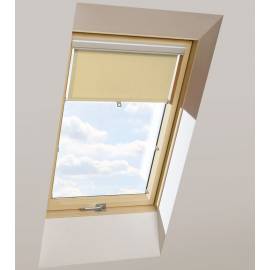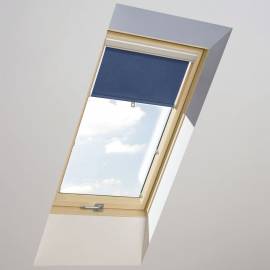With a wide range of colours and patterns available, interior blinds are destined to meet all your decorative desires and breathe a new life into your home. But this can make the choice somewhat difficult. With so many options to choose from, how to choose the right colours and patterns for your interior blinds? In this article, we’ll help you answer that.
Table of Contents
Pay Attention to the Perception the Blinds Create
You certainly know that colours modify our perception of size. In a tiny room, it is generally a good idea to avoid dark-coloured blinds because they tend to create a perception of smallness. Instead, choose light colours that naturally reflect light: white, beige, yellow, orange, etc.
On the other hand, in a large room, your interior blinds can be decorated with darker colours and patterns. Again, you can use the change in perception from different colours to make your design look exceptional. If the room is wide, with windows on either side, for example, darker shades will tend to “bring the walls together”.
Complement the Brightness of the Room
We can’t see without a light source, so it stands to reason that brightness affects our perception profoundly. This effect on our perception is why you should take brightness into account when buying blinds for your home.
- In a dark room, choose light-coloured blinds with warm tones: yellow, orange… Avoid cold colours, such as blue, green or purple.
- In a bright room, the choice is of course wider. Almost anything goes, including patterns, but be sure to match them to your interior design.
Choose According to the Type of Room
You will not choose the colour of your blinds in the same way in a living room and child’s bedroom. Each room has its own unique needs and requirements, and you need to keep that in mind if you want to select good blinds for your home.
- In a modern living room, you are not really restricted, and depending on the design of the living room, you can get away with buying pretty much any kind of blind. Generally, however, you should avoid patterned blinds and choose simple yet elegant blinds.
- In a children’s room, you should focus on quality and safety while giving preferential treatment to pastel tones for the little kids and bright and cool colours for the older ones.
- In a bathroom, aluminium blinds or roller blinds with moisture-resistant fabric can be adorned with red, blue or green colours, but you don’t have to keep it basic. You can also go with plant or floral motifs.
- In an adult bedroom, calm colours are the way to go, generally speaking. Their positive effect on sleep has been scientifically proven. But, you don’t have to limit yourself either. Black blinds for bedrooms are certainly not a bad idea. They can make the bedroom look chic and expensive.
Other products in category: Blinds & Accessories
£38.33 tax excl.
Other products in category: Blinds & Accessories
£40.00 tax excl.
Are You Interested in Blackout Blinds?
Do you want a blackout blind to completely block the natural light entering your room and completely protect your privacy? Or do you prefer to let the light circulate while dimming it slightly? Your preference here will also impact the colour of your blinds.
If you want to be able to make the room dark, It is best to choose an interior blind that has a dark colour: brown or black for example. Although opaqueness matters more here, the colour is also an important factor. Of course, you can get blackout blinds that are white or pink in colour, but they have to have a very thick fabric.
Conclusion
Choosing the colour of blinds is far from a simple or inconsequential decision. It is a decision that will impact how every single room in your home looks, and it is a decision where you have to take into account a variety of factors: what colour of blinds go with white walls, will rooflight blinds look good, and what blinds to get for my kid’s room are just some of the questions you’ll need to ask yourself. And after reading our article, you should be able to come up with good answers.


